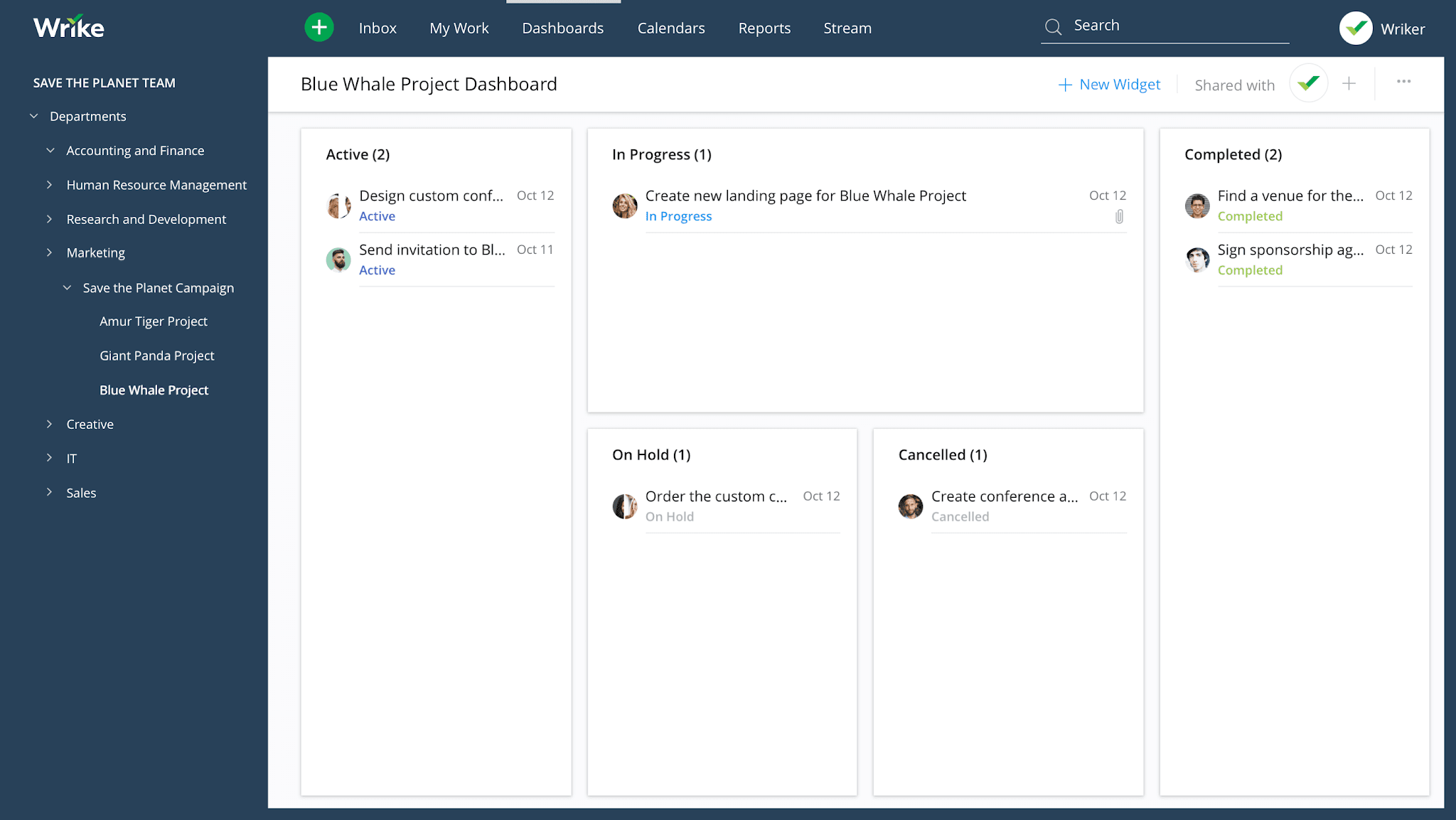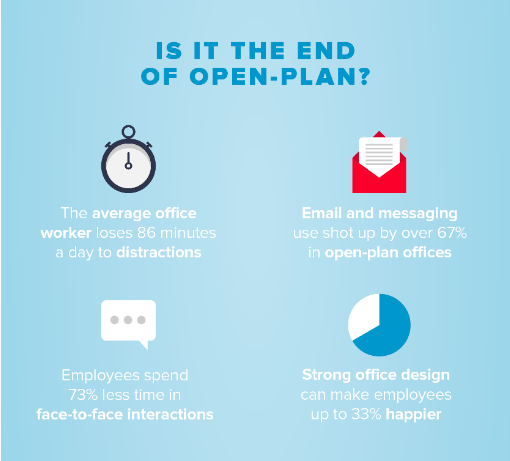
In 2019, starting your own company has never been easier. There’s a vast array of online tools, from business name generators to website builders and formation services, that make the process doable for people of all ages and experience levels.
However, building a company is often deceptively easy. Having a new slogan and flashy website doesn’t instill the necessary dedication and skills in your team to succeed. In fact, the ease of getting started can sometimes hinder productivity during the early days and beyond.
If you feel like your team members are lacking when it comes to cohesiveness and efficiency, here are four of the big reasons productivity might be struggling (and solutions that can boost your efficiency).
1. There Isn’t a Task Management System

How much time and money is your company losing to inefficiency? In today’s world, there’s no need for simple tasks to consume hours of your day. Digital technology allows us to communicate and complete tasks in record time.
However, if you’re not utilizing one task management system across the board, juggling multiple projects can become a bit complicated. The average person spends more than three hours every day on their email alone - imagine how much time is wasted when everyone on your team uses different methods to manage their tasks, communicate, share documents, and plan ahead.
The simple solution to this problem?
Project management software.
No matter what kind of company you’re running, there’s a package out there that specifically suits your needs. Tools like Wrike, Trello, Basecamp, and Proofhub all offer methods for easy collaboration and time-tracking. They also help to identify the weak spots where you’re losing productivity.
Additionally, project management software helps teams measure their time and work more accurately. It’s impossible to spot where productivity is the lowest if you’re not tracking people’s work. A shared task management system can hold everyone accountable while also providing useful data.
2. Training Stopped After Day One
Every company should have some sort of onboarding process when an employee joins, but the training should never stop there. No matter what industry your company is in, things are constantly changing. Developments in technology and society as a whole force successful companies to adapt. Therefore, training should never really end, even for upper-level staff members.
Worried that hosting training sessions and extra meetings will negatively impact your team’s productivity? Consider the fact that 59 percent of millennials value opportunities to learn and grow in the workplace and 87 percent believe that continuous professional development is important. Young employees keep this in mind when applying to new companies. People appreciate the opportunity to learn, and those skills will continue to feed your team’s success.
As your team members come together and learn, you’ll likely find that your company actually begins to work together as a well-trained, cohesive group. The extended training will also help identify weaknesses and skill gaps, which you can then eliminate to facilitate increased productivity.
3. Your Team Members Aren’t Happy
Recently, a group of economic researchers at the University of Warwick found that happiness resulted in a 12 percent productivity increase in the people they studied. In contrast, unhappiness contributed to a 10 percent decrease in productivity. Chances are, the attitudes and mentalities of your company’s employees play a big role in overall productivity.
What makes employees happy?
The answer can depend from company to company, but there are some shared things that all employees want from their job, including a healthy balance between work and life, transparency and honesty, plenty of PTO, and a path to future success.
Employees also seem to work better in companies that facilitate a positive work environment. We don’t want to sound cheesy, but perhaps there is something to smiling and cheering others on in the workplace. It doesn’t just improve attitudes - it makes the company more effective and successful.
Also, utilizing workforce planning tools allows companies to identify skills gaps and development opportunities, enabling employees to see a clear path for career advancement. When employees perceive that their organization invests in their growth, it fosters a sense of loyalty and commitment, ultimately driving higher engagement levels. Furthermore, workforce planning tools help in workload management, ensuring that employees are not overburdened, ensuring that the right people are in the right roles at the right time. For instance, the workforce planning tool from Personio can offer companies data-driven insights that empower HR professionals to make informed choices, enhance productivity, reduce turnover, and ultimately increase employee engagement.

4. Everyone’s Talking Too Much (or Too Little)
Every week, nearly 71 percent of professionals lose time due to unnecessary or cancelled meetings, according to a study conducted by Doodle in 2019. When researchers did the math, they determined that many countries were losing tens of billions of dollars to wasted time from inefficient (or pointless) meetings. Ask yourself how many meetings you’ve attended that could have been summarized in an email.
Think about your team. How often do you meet? If you do schedule meetings, what are your objectives? How do you communicate while in these meetings?
To ensure that the meetings your team schedules are necessary and productive, there are a few key tips to abide by:
Keep the meeting short. Think about TED Talks; they convey monumental messages in under 18 minutes. There’s no reason why your weekly overview meeting should take more time than that.
Only invite people who are actually necessary to the meeting. Others can be caught up via email later on. The more people that attend, the more off-track the meeting can become.
Establish clear objectives. Number the points of the meeting to keep the group on track. You may also want to include a quick, clean presentation.
Another thing to keep in mind when it comes to communication is that chit-chat can seriously slow down production. On the other hand, a lack of communication can cause projects to move slowly.
What about that new open-plan office layout everyone is adopting at startups and “hip” companies?
Harvard says it might not be the best for team collaboration. Their study in 2018 found that face-to-face time decreases in this environment and causes many employees to withdraw, making communication less effective.
Think about how your team’s layout works. Whether people are all working in an office or from separate places, design your spaces so that they contribute to open communication and productivity. This will likely take some critical observation, as every business’s situation will be a little unique.
Conclusion
Improving business productivity isn’t just about turning a profit.
Happy, healthy businesses get stuff done without wasting time or talent. Billions of hours are thrown away in the workforce due to a lack of management and poor planning. By facilitating better internal communication, continuously learning and teaching, and increasing positivity while cutting out unnecessary meetings, you’ll probably see an enormous leap in your team’s productivity.
Author’s bio:
Manish Dudharejia is the President and Founder of E2M Solutions Inc, a San Diego Based Digital Agency that specializes in White Label Services for Website Design & Development and eCommerce SEO. With over 10 years of experience in the Technology and Digital Marketing industry, he is passionate about helping online businesses to take their branding to the next level.
What would you like to know and what would be the best way to share this information to you? What is the best tips & tricks, what workaround do you use? We'd really appreciate your insight on these ones to make our integrations better, more productive and much more efficient. Comments, tweets are always welcome.